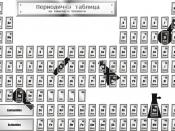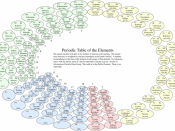The periodic table is a great example of how careful, systematic organization can lead to a better understanding of the pattern found in nature. In the periodic table there can be a time when it just doesn't look right or was a bit weird. A group or period of elements just didn't make sense. When scientists thought they were missing something one would have to look over this table very carefully. One would by having a chance to predict an element in a certain spot in the periodic table. This was done to make the table look better and make a bit more sense than it did before. It could predict its characteristics by where it was or where it should be. There patterns are like some in nature as in natural selection or what types of animals live where.
By having each element to belong to a group, period, or family it was easier to put elements together.
Each group had their own traits because each one ends with the same sublevel. For example, all the alkali metals are in group one and they all end with one electron left over. Not only did each element leave one electron in a sublevel but the their last sublevel was in the S orbital. There are 18 groups and 7 periods. Each period has their own trait as well. Each element that are located in the 2nd period all end their electron configuration in the 2nd energy level. In nature there are groups of animals such as mammals, reptiles, etc. Each one share a trait of their own just like the periodic table. For example, mammals have their hair and reptiles are cold-blooded. Now those are both bold traits to justify an animal with a group, but they are great help...


